
Smashed It
Chet Faker’s Built on Glass just keeps on piling up the accolades — ARIA Album of the Year and topping Triple J’s Hottest 100. For Eric J Dubowsky, it’s a mix that’s cemented the American amongst Australia’s elite.

Artist: Chet Faker
Album: Built on Glass
Awards might not mean much to some people, but to Eric J, winning ARIA Engineer of the Year was validation for five years hard work that began with cold calling in a foreign country, and included a second act mix-off against Tony Maserati that won him the favour of the cutting edge Future Classic label.
Five years ago, Eric was new to the country; an American with an Australian wife, who’d moved over to have their first child. In The States, freelancing in the music business doesn’t come with health insurance benefits, and the first round of tests and ultrasounds were already mounting up into the thousands. They needed to get out of there before they were loaded with debt, and Medicare was looking pretty darn good from across the Pacific.
In his past life, Eric had engineered some notable sessions, including Weezer’s Red Album under the nose of Rick Rubin. But his American credits didn’t necessarily translate to the level of work he was accustomed to. He still had to prove himself to the cadre of Aussie music industry A&R execs. So with a diary of free dates, he sat on his new couch in Sydney watching the Australian record industry’s night of nights and started doing some homework.
Each acceptance speech read like a PR hit list of prospective clientele. Direct from the horse’s mouth he was getting a verbal description of the owners, trainers and jockeys surrounding each stud farm corral. As each artist got up to receive their award he was frantically scribbling each set of names down. That night he sent the list to his manager in the States with a memo to put the call out.
ALL ABOUT THAT BASE
It was an inauspicious start. For a couple of years he engineered, produced and mixed a range of modest projects, with all his Stateside professionalism intact. He was working out of a cubbyhole at Studios 301 in Sydney and started to break through, including a big stint working as a producer for The Voice.
His big break onto the Australian electronic music scene came when he was recommended to record Emma Louise’s vocal for the Flight Facilities’ song Two Bodies. After recording in Studios 301’s main live room, the next day he took the Flight Facilities team upstairs to his studio for the edit. He gathered the whole crew upstairs, because he figured most laptop producers were working at home in smaller studios, so he wanted to show what he could do with access to outboard gear and a good listening environment. Plus, he said, “I know things about audio from years of just doing it. I was excited to get in with these guys because I feel like there’s so much exciting music coming out of Australia. I really wanted to work on some of this electronic stuff, but they usually don’t give you a chance unless you have electronic credits.”
Eric’s account was low on those kinds of credits. But the show ’n’ tell paid off, Flight Facilities were impressed enough to give him the mix too. It became the single about eight months later.
From there, Eric started checking out more electronic acts, and the trail kept leading back to Future Classic. Luckily, he had an inside man. Jimmy from Flight Facilities had no qualms recommending Eric to Nathan from Future Classic. And from there… it snowballed. Eric: “I got a text from Jimmy saying, ‘Nathan from Future Classic is going to call you.’ Ten seconds after I got that text, Nathan called and told me, ‘I need a Flume mix done, can you do it today?’”
He immediately cancelled his day, got the files sent over email, and started mixing the Flume track The Greatest View, which featured vocals from Isabella Manfredi of The Preatures. With the mix in the bag, Eric was asked to be the Musical Director for Flume’s ARIA performance of the same song.
MASERATI TEST TRACK
By that time, he’d endeared himself to Future Classic enough to get a shot at an album, Chet Faker’s Built on Glass. There was one caveat: ‘Would you be willing to do a spec mix? Because the American label wants Tony Maserati to mix it.’
“Obviously I know that guy is badass,” said Eric. “But I was definitely up for the challenge, so I said, ‘Absolutely, give me the files’.” The test track was Talk is Cheap. Eric took a listen to the album roughs and realised it was, “a really great album. They don’t come along every single day, so I put everything into doing that first mix.”
Like most spec mix-offs, he didn’t have any communication with Nick Murphy (who is Chet Faker). “It’s really stressful when you do a spec mix like that with no feedback,” said Eric. “No one to ask how much reverb they like or if they have any references.” The only place Eric could go for insight was online, where he dug up previous Chet Faker releases to get a sense of how much reverb to use. “Because that’s usually the big thing with singers,” he said. “How much ’verb they like on their voice.”
He did his due diligence, plotting a course from Chet Faker’s previous EP and predicting where he imagined the artist would want to go sonically. “I knew it couldn’t be too polished because that’s not the vibe. But I still wanted it to be polished enough so it would sound really warm. As a mixer it’s your job to help realise that person’s vision, to take what they’ve given you and make it better. Especially since I knew Nick produces the stuff, so it’s not like I’m going to go 180 degrees in a different direction to the rough mixes. I made a choice to hold everything out in one section towards the end and I was thinking, ‘Oh man, I hope this isn’t too much.’ I was really happy when I got the call saying everyone really liked it.”


BOXING DAY SPECIAL
He beat out Tony Maserati and got the gig. But it had taken him four days to nail that mix, and Future Classic wanted the rest of the record mixed in 10 days! Eric: “I started the next day, on Boxing Day; I was supposed to have the whole week off. I told my wife I thought it was going to be a really big record, and that I had to do it. I had to get somebody to turn on the circuit breaker at 301, because the studios were supposed to be closed!
“I mix a lot of records remotely these days, sometimes I never meet the artist, we might just email a couple of times and that’s it. But it was down to the wire, and Nick was in Melbourne, so I asked if he could come up for five days just to save sending files back and forth.
“Sometimes I like to have the artist there to ask specific questions. With Nick it was really imperative just so we could get it done quickly. When people bounce stuff out of Ableton Live, you don’t know if the files are exactly the way they’re supposed to be delivered — there might be a bell sound missing, for instance, an automation issue, or a wet/dry balance just not coming through properly.
“With 1998, we couldn’t get Live to bounce the parts the way they were in his rough mix. It was literally down to about 11 o’clock at night the day before we were supposed to master it, and he was still at his laptop in the studio trying to get these files properly bounced down.”
ATLANTIC SOUND
Eric has toyed with the idea of mixing in Ableton Live, considering most of the projects he’s mixing for Future Classic were created in the DAW. But he’s pretty happy with the sound of his Pro Tools HDX rig, clocked with the Isochrone 10M and Isochrone Trinity atomic combination. He has a bunch of outboard gear including his much-loved Bricasti M7 reverb, a Lisson Grove R-124 compressor, Moog analogue delays, Neve and API preamps, and listens to Barefoot MicroMain 27s alongside his Avantone Mixcube.
One big piece of gear that Eric plans on integrating, so he can mix in other DAWs, is the mint vintage Harrison 32/32 console sitting front and centre at his new Hercules St Studios digs. “People say the biggest problem with Ableton is the panning isn’t as wide and the stereo field isn’t quite as three-dimensional,” said Eric. “The reason a guy like Rich Costey can mix in the artist’s preferred DAW is because he’s going out to a console. So the stereo summing doesn’t get affected.”
Eric worked with Costey on the Weezer record, and what he took from that time was an appreciation for Costey’s irreverence; a complete lack of concern for ‘the rules’. “The lack of a system is what I found inspiring,” recalled Eric. “He didn’t do the same thing every time.”
His earliest mentor though was Arif Mardin, one of the great Atlantic Records producers, and responsible for the ‘Atlantic sound’ as a key part of a triumvirate that included Tom Dowd and Jerry Wexler. Eric started working for Mardin at 23, when the producer was in his late 60s. But he still had plenty of sage advice to go round. “It’s young kids that make electronic music, but historically it’s the guys with experience who work with those people,” said Eric. “Arif used to tell me he’d go to Studio 54 and just watch what the people are enjoying. Which is one reason why I’m going out to see Flight Facilities tonight. You have to be aware. There’s an equation; there’s the music, but there’s also the audience.
“Then working on a Rick Rubin project, there were certain aesthetic principles that guy adheres to, and consequently, all the engineers adhere to. There’s got to be a human element and it’s got to affect you emotionally — it’s the most important thing. There are core principles I’ve taken from each of those people, but you kind of assimilate it into your own.
“With Chet Faker’s music I’m trying to create more of an emotional connection to it. Sometimes laptop producers might be recording in a less than ideal environment. It can give it a vibe, but then my job is to try and eliminate the veil between the music and the listener. So a big part of what I do is retaining the vibe, but getting rid of noise, ground hum, and clicks and pops that take you out of that other world.
“There’s good and bad noise, it’s about knowing the difference; figuring out where the vibe is coming from and what is putting a barrier up. It’s not the most glamorous of jobs, I spend quite a bit of time going through the tracks making sure there’s nothing that takes my head out of the emotion.
“It’s like what Rick Rubin would say, ‘if you put a microphone in front of Johnny Cash, all of a sudden, that’s genius.’ Really, what he was saying was when you have a great artist, you just have to make it pure and stay out of the way. With Chet Faker, it’s obvious Nick worked really hard before I ever met him, and the songs are effortless when you let them become what they should be.”
Some elements you feel more than you hear, and that’s a big part of mixing to me
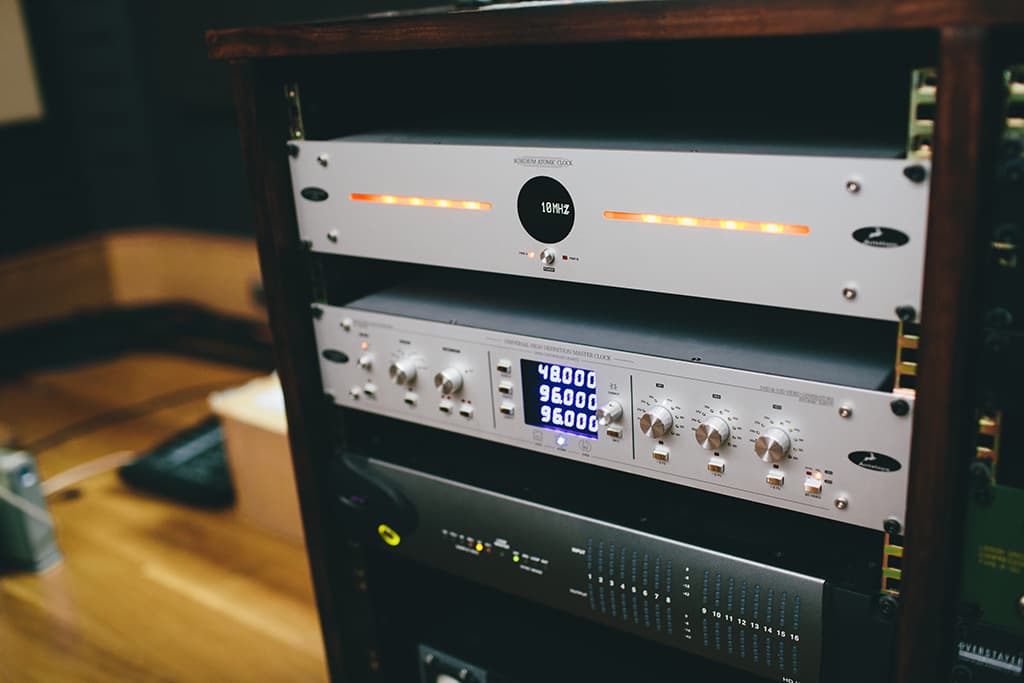
KICK BACK & CHILL
The vision for Built on Glass was the kind of old soul that perfectly complements late afternoon summer sunshine and a G&T. So for Eric, the foundation was always going to be the low end. “I’m from the New York area,” said Eric. “And the first New York City studio I worked in was a hip-hop studio. So the low end is the foundation everything is built on, especially with electronic music.”
Even though the songs were leaning towards the mellow end of soul, it’s still “all about having that really focused kick, sitting right at the edge of the speakers,” he continued. “People have a different aesthetic depending on where they come from and what they grow up with. The classic New York sound was to always have the kick and bass really loud. On all those old Atlantic records they used a VU to measure how loud the kick was and put the bass about half a dB louder than the kick. It was a science.
“I spent about half a day going through the sounds and samples on Talk is Cheap making sure the kick was in the right place. It hits you, but it’s not too punchy.
“The kicks couldn’t have too much point on them because we were thinking about it like an old soul record. Knowing how, on those old records, the transients would get rounded off by the tape, I wanted the kicks to sound really analogue and warm. I do a lot of parallel compression, especially on the kick, and I’ll have multiple compressors just for the kick.
“I’ll bus all the drums to two parallel compressors, one with a really heavy compressor that I’ll only mix in a little of. Then I have a kick sub that I’ll move up or down depending on the part, the song or the genre.
“There’s so many elements of the kick. You don’t want the sub frequencies to overwhelm everything and eat up all the headroom, so I try to create a lot of harmonics so even on lower level systems you can hear the kick.
“I have a few different auxes with different compressor flavours to mix and match between. The plug-ins I use a lot on those auxes are the McDSP Compressor Bank, the Softube Tube-Tech, and the Valley People Dynamite — some might be for a little more bite, others for sub. And one of my secret weapons has been the Overstayer Saturator which is an outboard piece of gear. It’s like a Thermionic Culture Vulture or a Decapitator — it really crunches things up in a nice way, and gives it some harmonic distortion.
“I also add kick samples. Like everybody, I have a huge sample library, which is one thing that’s different about production now. When I first started it was ‘a thing’ if you had a good sample library. You used to seriously guard your drive that had samples on it, and wouldn’t let anybody copy your samples. Now in five minutes you can go online and get all of J Dilla’s drums or all of Jay-Z’s samples. It’s not a badge of honour like it used to be.”


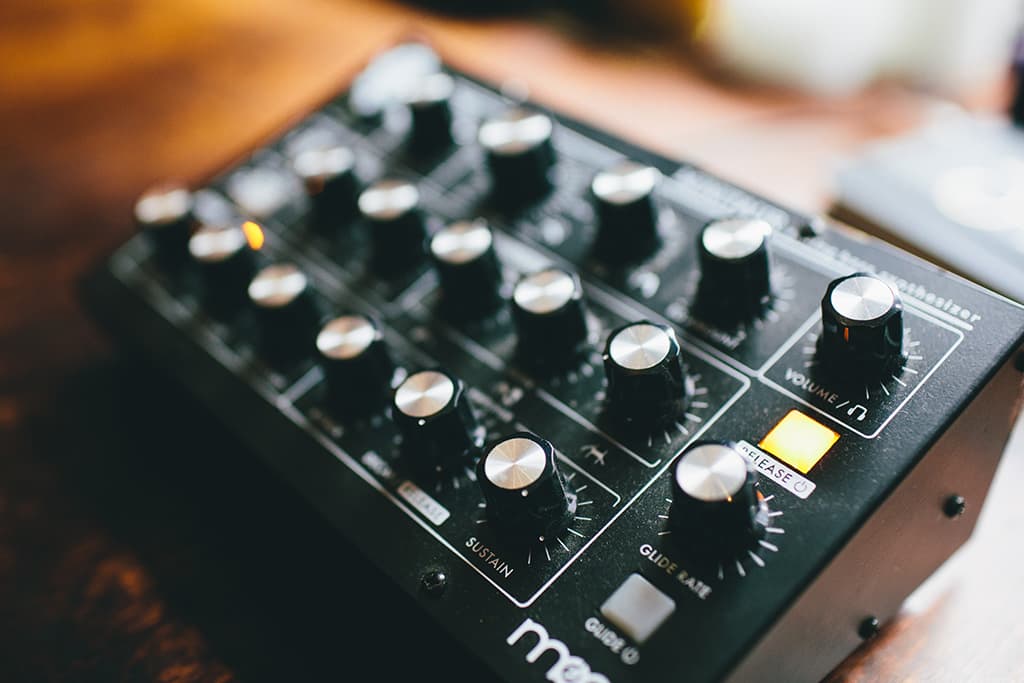
TRANSLATING VISION TO SOUND
There’s a second emphasis in conveying the artist’s vision that takes just as much experience. Eric: “I’ve heard songs I’ve mixed played back on lots of different systems — I’ve heard it on the radio, I’ve heard it in gas stations — so I know what gets lost in a mix. That’s another part of my job, to make sure the vision translates across all mediums. People are watching videos on YouTube and listening on their iPhones. I got this plug-in so I could stream to my iPhone and any laptop. I have the little Avantone speaker, really nice Barefoot 27s which sound amazing, but then I also have a little Bose sound dock. I have every kind of speaker you can have.”
And, of course, there’s also the car stereo. Eric was checking out one of the masters and realised the snaps were too loud on one song. “I’d checked on every system and then I heard that, ‘Dammit!’” he said. “I was half way home, but I drove back to the studio at two in the morning to fix it because it would have driven me crazy.”
IN TUNE WITH THE INTENT
One of the striking things about the lead vocals on Built on Glass is the lack of any tuning. It’s not because Eric isn’t capable of working the controls on Melodyne, on any other record those warbles would be taken right out. But for Chet Faker it’s the sound of authenticity, and that vision of “a classic soul record. The record just happened to have some samples and some electronic elements on it, but at its core it’s about a guy singing and playing,” said Eric. “If the performance is authentic then people don’t really care. A lot of the kids today don’t necessarily know what the influences might have been, what old soul music might have sounded like. So it’s a point of a difference that it’s not overdone and lets the emotion come through. A lot of our favourite records are far from perfect.
“It’s so easy to get this hyper focus. I’ll do a critical listen where I just listen to the vocalist singing the song to make sure nothing is taking away from that. And one of the last things I do is read an article in the New York Times or something while I’m listening to the mix in the background. My mind disengages, so if anything stands out, then that’s something I know needs to be fixed.”
A big part of what I do is retaining the vibe, but getting rid of noise, ground hum, and clicks and pops that take you out of that other world

BACKGROUND TEXTURE
Depth is a big part of any mix, but especially in neo-soul, where there’s often a foundation of drums and bass, vocals over the top, and a lot of space in between. On this record especially, said Eric, “it was like kick, snare, vocal. As long as all that was in the right place, then you could have fun with the atmosphere.” Backing vocals can often make up the difference, adding complexity and depth to arrangements without introducing a new instrument to draw away the focus. Eric loves this arrangement style, treating backing vocals to an elaborate diet designed to fatten them up and widen them in the stereo field. It’s a creative process helmed by his Bricasti M7 reverb, analogue spring reverb and Moog 500 series analogue delays. He’ll often print loads of effects from the short and simple natural room reverb, to the wild and manually manipulated, working them all together into a subtle atmosphere.
Eric: “BVs are now as important as they’ve ever been. It’s one of my favourite things, to use the whole stereo field and a lot of delays to place things around the listener. I’ve been treating the reverbs by distorting them, sending them into delays and compressing them. There’s so many things you can do, like side chaining reverbs. I try to make it so the vocals still sound upfront, but then there’s atmosphere around it. That was another technique Arif Mardin shared with me; send something into a huge crazy reverb and just barely have it there in the track. Some elements you feel more than you hear, and that’s a big part of mixing to me.”
It extends to more than just the backing vocals. On Talk is Cheap there’s a delayed snare panning across the stereo image, and the Fender Rhodes tracks are often moving in subtle ways. It’s all part of helping a mellow record stay exciting. On Blush, a heady, almost dancey track, the drums sit right out on the edge of the image. “It had a different reverb, because it felt like that part was almost a dream,” said Eric. “I love scene changes in music where for maybe one minute you’re in this other location. I have a very visual sense when I’m mixing, so I’m imagining where the person is standing. It becomes a little different with electronic music. You used to imagine a band in front of you, whereas now there’s a swoosh over here and something else over there. It’s fun to try and mess with people’s expectations, not to be jarring, but to introduce change. Automating reverbs is about changing space. You’re not altering the actual reverb but maybe you’re changing where they’re standing in relation to you, or using more pre-delay so they’re more in front of you than in the back of the room.
“I use a lot of UAD effects; the Space Echo, Dimension D on vocals, and I always use the EMT140 plate. They’re really good at modelling what would happen if you send a lot of a signal into the unit. So sometimes I’ll send more from the bus and keep the volume low.
“My sessions are pretty huge and it’s mainly effects and parallel compression chains. Even if I get a song that doesn’t have a lot of tracks, I send them to a ton of stuff just to try and keep it exciting.
“That’s another thing I love about the HDX system. I know if I run out of voices then I’m being over-indulgent. I’ll be doing things like creating a separate reverb channels for two words of a song, either creating a separate delay for one line of a song, or a triplet delay for just one word.
“I love doing that. I just mixed a song where I had four different delay throws, so you never get the same thing twice. It just keeps it interesting. One time it’s a triplet, one time a quarter-note delay, then sometimes it might be a sixteenth-note with a lot of feedback. You can just play with these things, there’s so many possibilities.”
On the flip side, for the main vocals, Eric used some longer delays on end sections, but for the most part didn’t want them to be too effected, because he “knew it would lose some of that authenticity”. They still received their fair share of treatment, always going through the Lisson Grove R-124 tube compressor, with some vocals passing through a Neve pre and EQ, all to add more harmonics and intimacy.

RHODES TO AN END
The Fender Rhodes is the other main component of Chet Faker’s sound. It’s present on almost every song off the record, but it doesn’t always sound the same. “It was mandated by the song,” said Eric. “Sometimes the Rhodes was the bass. I’ll cut up the track into different pieces so I know if the Rhodes is doing the bass here, then I’ll use all my subs and treat the bass for extra harmonic content. I use three or four parallel compression chains, and have a UAD Voice of God plug-in to get some extra low end coming through on a laptop.
“Talk is Cheap doesn’t have a bass, it’s the Rhodes. So there’s a Rhodes track I treated as the melodic part, and another I split out onto a separate channel to EQ and push completely differently.
“He mostly played the parts all at once, because he’s a player, and it was all on a real Rhodes. So on Talk is Cheap I took the left-hand part of the Rhodes and put it into Melodyne to get an identical MIDI performance. Then I put synth bass underneath just to add a little bit of low end.
“Often people will just give me a whole track and I do a bunch of creative editing and EQ to extract different elements. When people give me a drum loop, sometimes I like to add samples. It’s an interesting experience trying to trigger samples using a drum loop, you have to cut everything into different parts. My friend Chris Shaw recommended Cable Guys’ Volume Shaper for that.”
It shows there’s a lot of work that goes into taking a laptop producer’s work and crafting a more detailed expression of the artist’s original vision. But as Rubin and Mardin before him have pointed out, once you have a voice like that, “it’s about providing support, and leading the listener along.” No auto-tuning required.


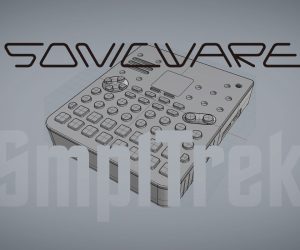





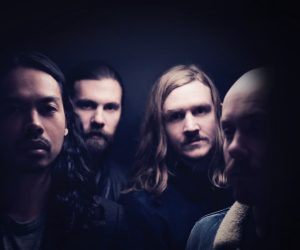



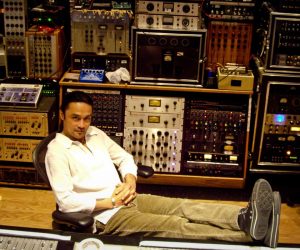



RESPONSES